Japan no.1 Tran Thanh Tu wins Western Tokyo Chess Championship 2022
Top two seeds CM Tran Thanh Tu and IM Shinya Kojima scored an unbeaten 3.5/4 at Western Tokyo Chess Championship 2022. However, Tu edged past Kojima on tie-breaks to clinch the championship. Kojima had to settle for the second place. Five players scored 3.0/4. Enju Sakai secured the third place due to better tie-breaks. Two of the strongest Japanese players played against each other in the final round and they secured the top two places. This was the first time Tachikawa Chess Club hosted a qualifier for the Japanese Championships. Tournament report and photos by one of the participants, Seiji Nakagawa along with a game of his from the event. Photo: Seiji Nakagawa
Japan's top players claim top two places
The Western Tokyo qualifer for the 2022 Japanese Chess Championships was held in Tachikawa City Women's General Center AIM. The format was four round Swiss league, 30 mins + 30 seconds/move and NCS standard rated. Despite the fact that the tournament was announced three weeks prior, 28 chess players gathered to play in Tachikawa. From all the participants, only one out of six players qualify (rounded up if total number of participants isn't divisible by 6) so top five placers were eligible to qualify. In addition to this, the local player with the most points is also seeded into the Japanese Championships. So what is Western Tokyo? In this tournament, players residing in the Tama area, as well as Nerima, Suginami, Setagaya wards were considered local. Out of 28 participants, 9 people were eligible in this category. This was the first time the Tachikawa Chess Club hosted a qualifier for the Japanese Championships.
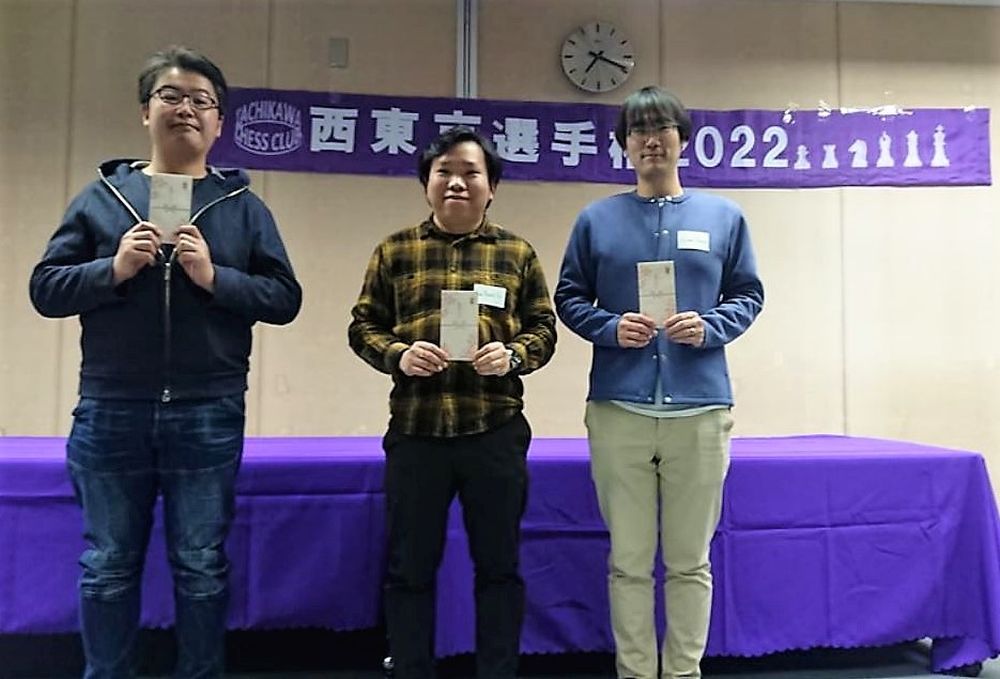
The top seeded player was the reigning Japanese Champion, CM Tran Thanh Tu (He is the 2020 Champion, 2021 tournament was cancelled due to COVID). Next on the list was IM Shinya Kojima. Therefore the possible matchup between the top two seeds were anticipated. Other than that, there were many players rated between 1600-2000 so the five qualification spots were expected to be heavily contested.
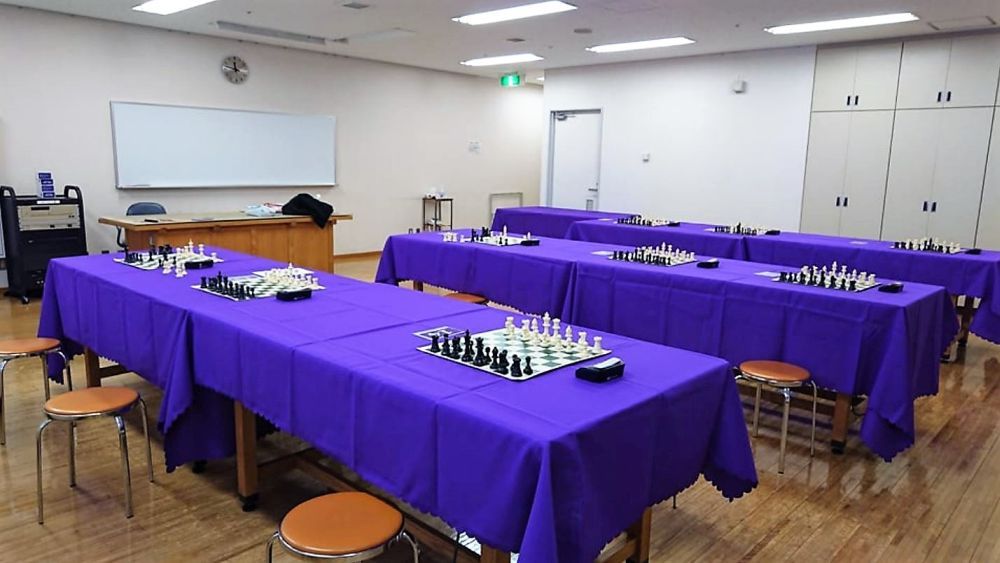
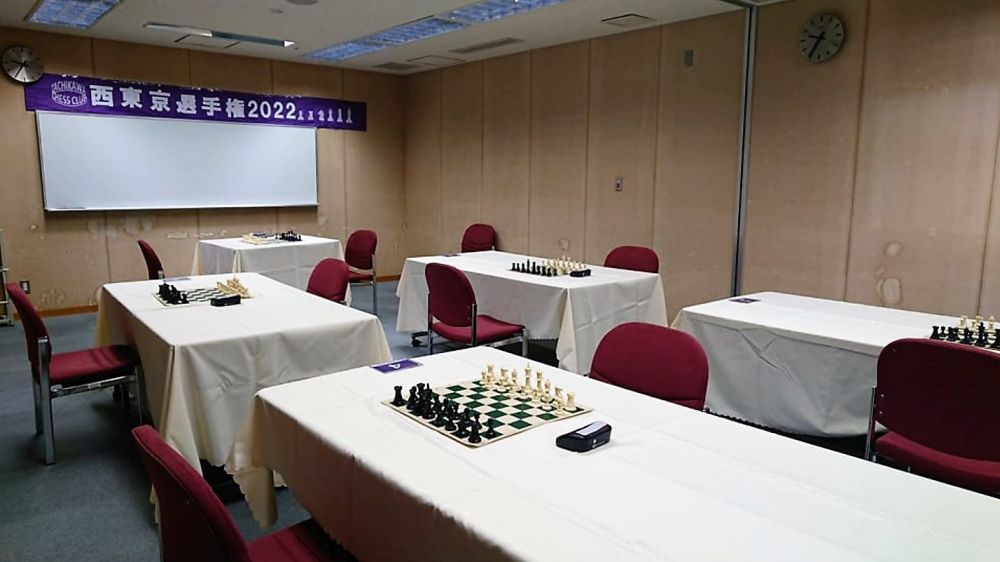
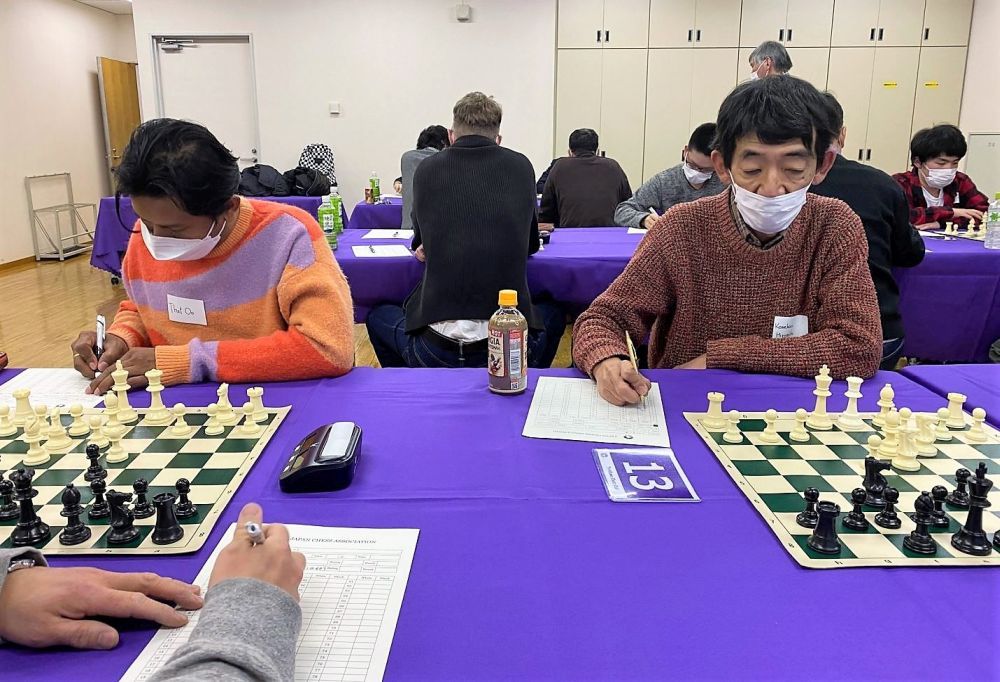
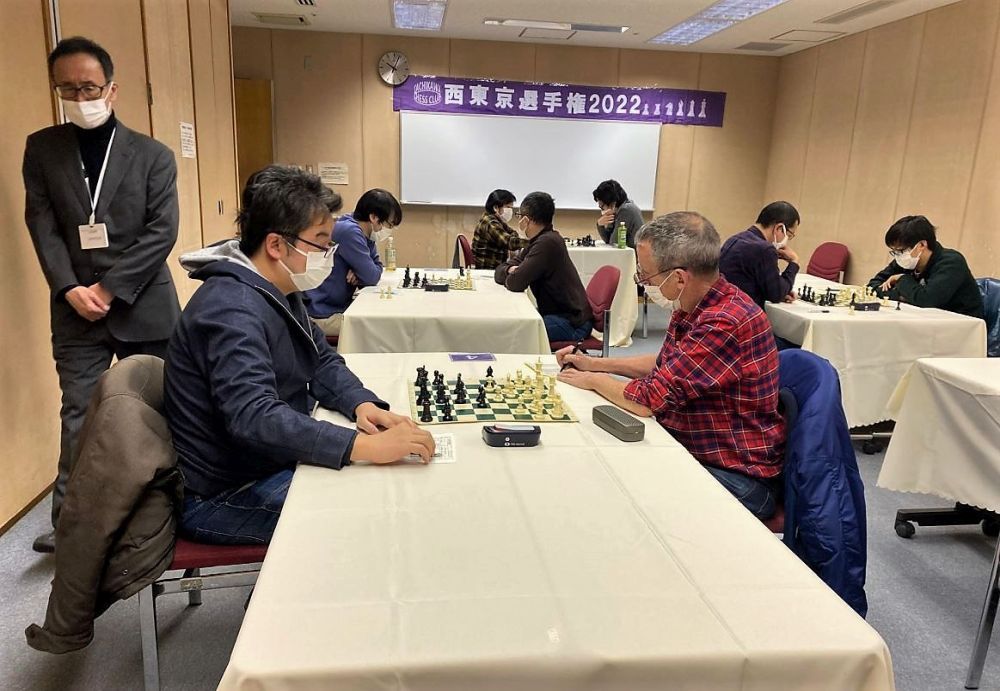
After three rounds, CM Tu and IM Kojima remained in sole lead with 3/3 points, so they were paired in the final round. The pairings for the top boards were:
(1) IM Kojima Shinya (2499, 3/3) - CM Tu Tran Thanh (2558, 3/3)
(2) Sakai Enju (1847, 2/3) - Otsuka Shou (1977, 2.5/3)
(3) Tristan Montanelli (1630, 2.5/3) - Kanda Daigo (1768, 2/3)
We were still uncertain of who would win the tournament, as if Kojima-Tu drew and the player on 2.5/3 points won on boards 2 and 3 then all of them would be on 3.5/4 points.
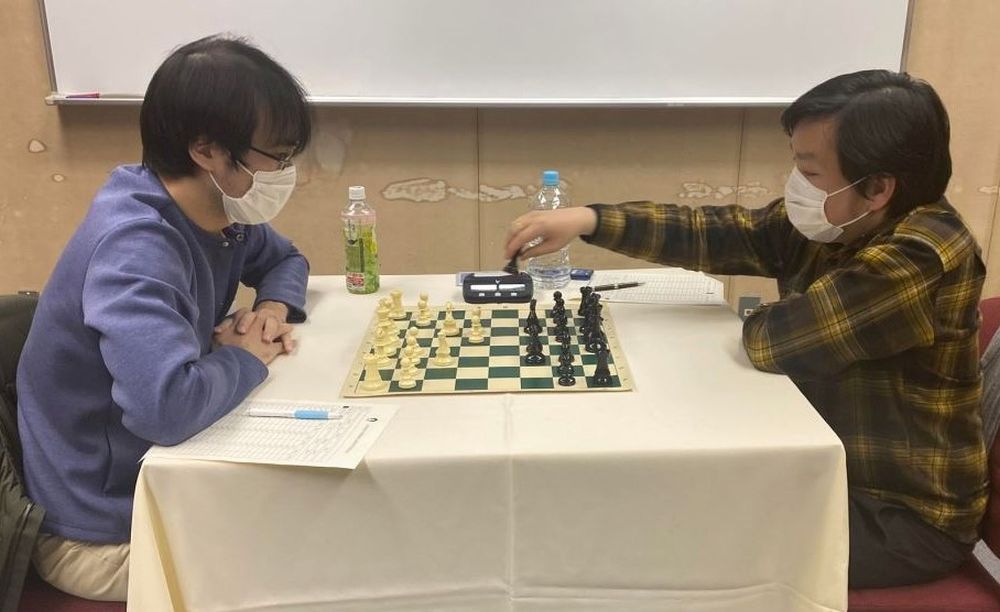
Having two of the strongest Japanese players playing each other, we already get a preview of the upcoming Japanese championships. In the end, Kojima-Tu was a draw, but both players with 2.5/3 on boards 2 and 3 ended up losing. With four rounds completed, CM Tu and IM Kojima emerged 3.5/4 points and shared fst place. However Tu had the better tiebreaks and was considered tournament winner. There were five players on 3/4, but Enju Sakai had the best tiebreaks, so he was awarded third place.
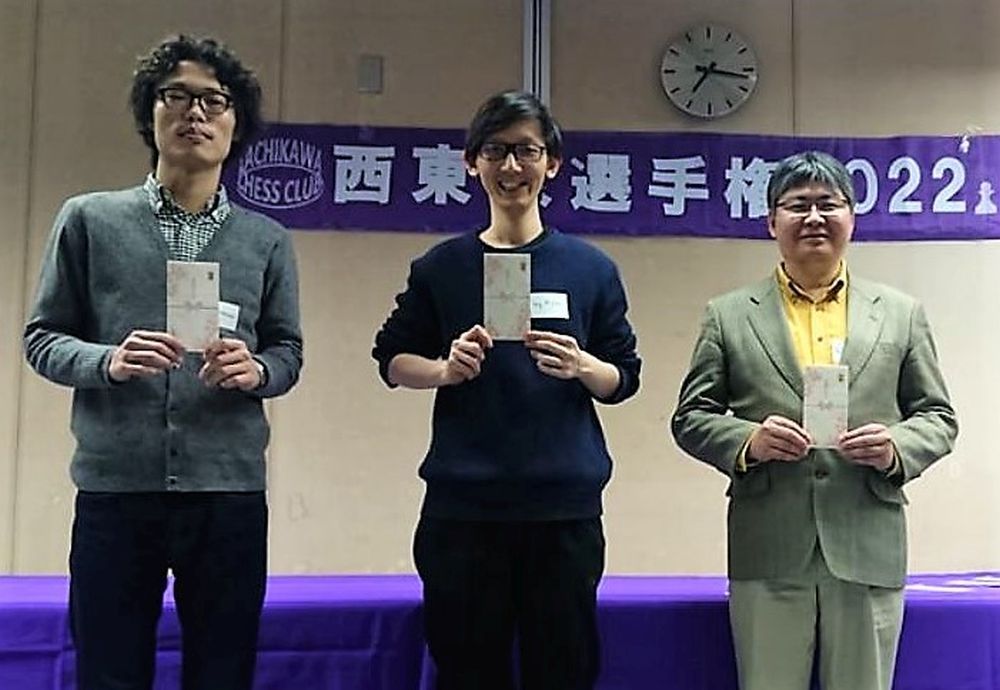
Prizes were given out to the best performer rated Under 1600. In the order of tiebreaks, Tony Wijaya, Mitsunori Makino, Yasuhiro Aoki all scored 3/4 and was awarded 1st-3rd in the U1600 category.
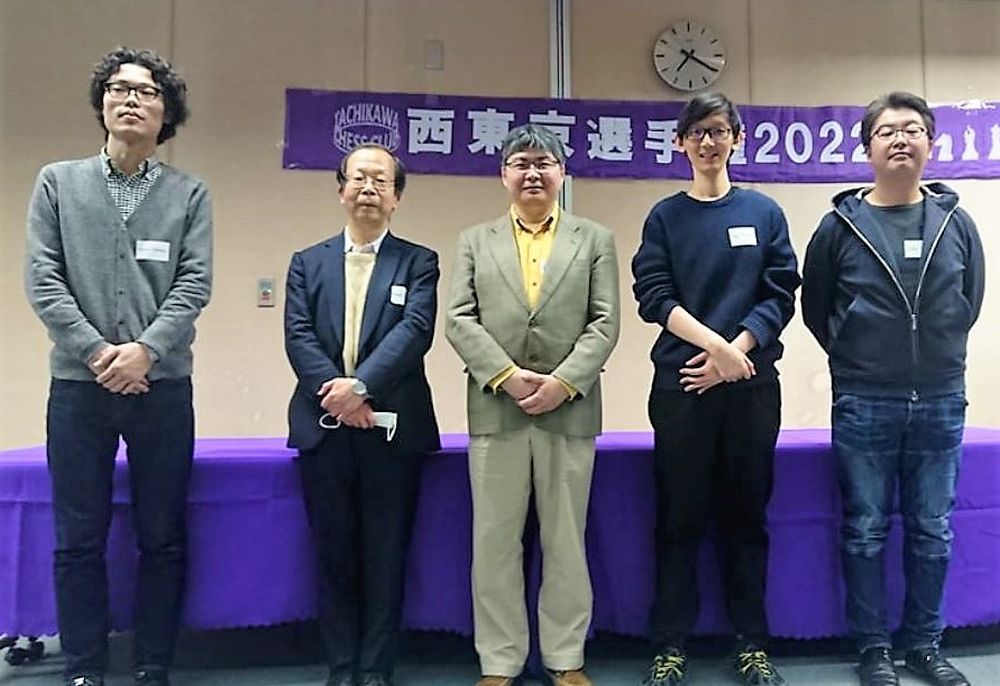
Players who were seeded to this year's Japanese Championships were Enju Sakai, Tony Wijaya, Mitsunori Makino, Yasuhiro Aoki and Daigo Kanda. Yukihiro Yamada obtained the local (West Tokyo) representative slot.
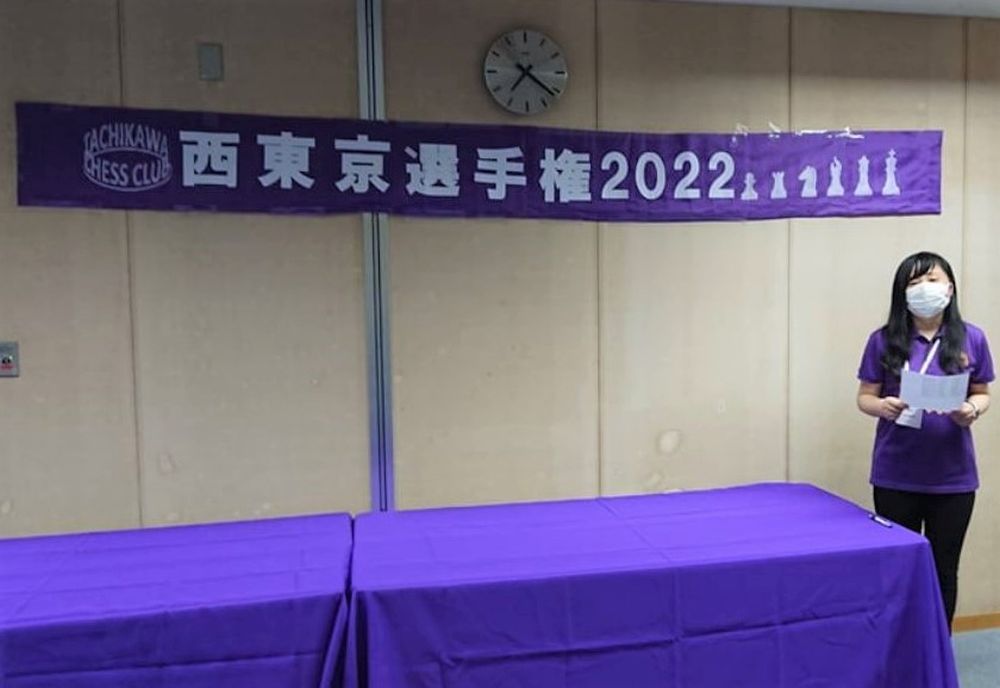
The tournament concluded with closing remarks from the organizer, Qinlan (Shinran) Xie. Tachikawa Chess Club was unable to hold events for the past two years due to COVID but now with less restriction on venue leasing, Qinlan wanted to provide opportunity for Western Tokyo residents to participate in the Japanese Championships. In the future, she hopes to invite foreign chess players and hold Chess festival events as well as tournaments.
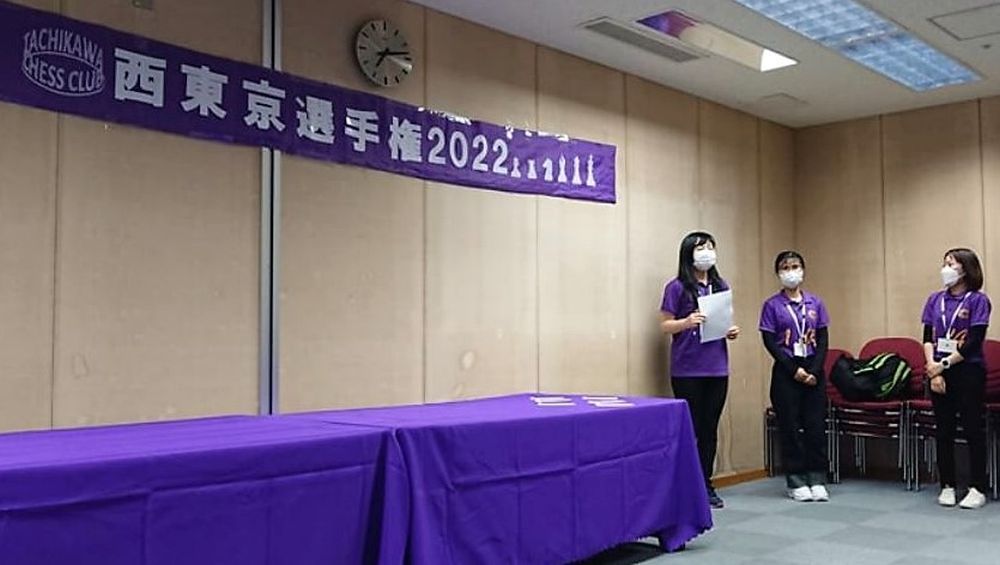
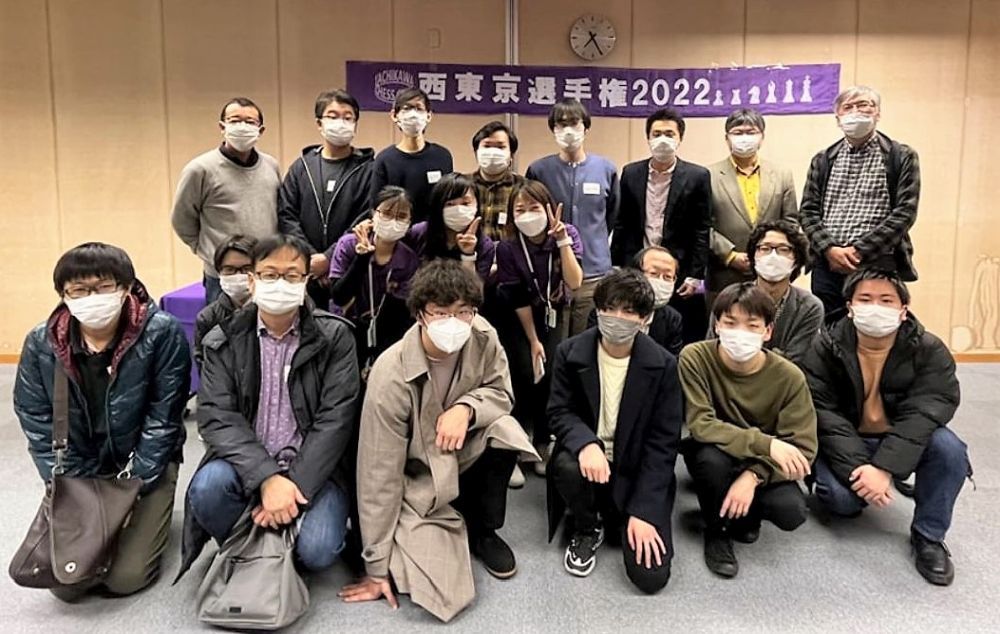
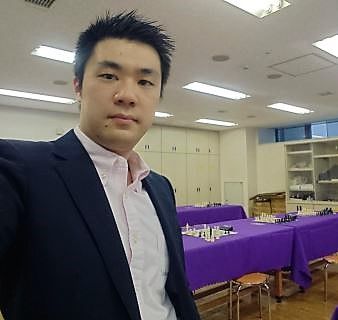
I participated in this tournament. Due to work, I was hesitant about joining NCS but this tournament gave me the final push needed to purchase myself a yearly membership. I was rusty since this was my first tournament after the outbreak of the pandemic. Nevertheless, I enjoyed all my games. I will go over the highlights with my game against Yoshikatsu Tomii.
Tomii - Nakagawa, Round 3
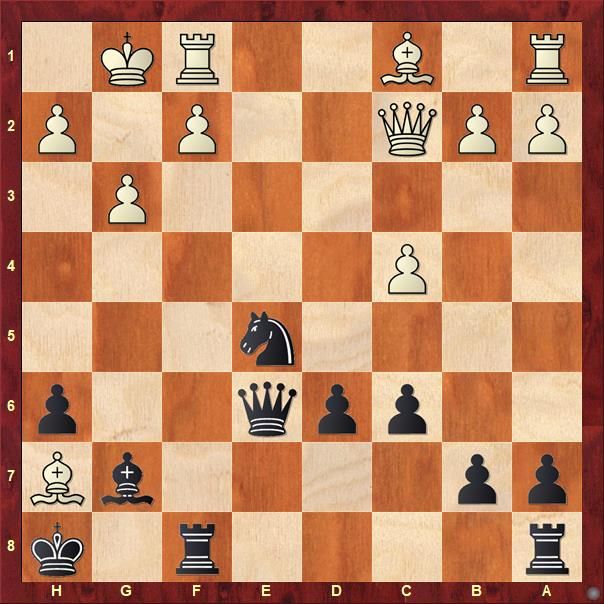
In the above diagram, 18...Qh3!! was the strongest. The only way to prevent 19...Nf3+ followed by 20...Qxh2 is to play 19.f4 (19.f3 Nxf3+ 20.Rxf3 Rxf3, and the c1-bishop is blocking the a1-rook so White must sacrifice something to stop ...Rf1 mate), but now 19...Ng4 is strong as there is no good way to meet 20...Bd4+.
I have considered 18...Qh3, but gave up looking for more when I saw that 19.f4 defends h2. Being a pawn down with a weak king, I couldn't make myself give my opponent an extra move to defend by playing 19...Ng4. This was why I looked for alternatives. When I saw that I was assured a perpetual, I played 18...Nf3+ and after 19. Kg2 Ne1+ I won an exchange, but my attack had evaporated and I did not get another opportunity to create complications in the game. The game ended in a draw.
Final Standings
| Rk. | SNo | Name | Typ | Gr | FED | RtgN | Pts. | TB1 | TB2 | TB3 | TB4 | |
| 1 | 1 | CM | Tran Thanh Tu | JPN | 2558 | 3,5 | 9,5 | 11,0 | 9,25 | 6064 | ||
| 2 | 2 | IM | Kojima Shinya | JPN | 2499 | 3,5 | 9,5 | 10,5 | 8,75 | 5839 | ||
| 3 | 4 | Sakai Enju | JPN | 1847 | 3,0 | 8,5 | 10,0 | 6,50 | 6172 | |||
| 4 | 22 | Tony Wijaya | WST | A | JPN | 1312 | 3,0 | 8,0 | 9,5 | 6,00 | 6020 | |
| 5 | 15 | Makino Mitsunori | A | JPN | 1576 | 3,0 | 7,5 | 8,5 | 5,00 | 6117 | ||
| 6 | 14 | Aoki Yasuhiro | WST | A | JPN | 1595 | 3,0 | 7,0 | 9,0 | 6,50 | 3810 | |
| 7 | 7 | Kanda Daigo | JPN | 1768 | 3,0 | 7,0 | 7,5 | 4,00 | 5642 | |||
| 8 | 3 | Otsuka Shou | JPN | 1977 | 2,5 | 8,5 | 10,0 | 5,75 | 5072 | |||
| 9 | 12 | Tristan Montanelli | JPN | 1630 | 2,5 | 7,5 | 8,5 | 4,25 | 3745 | |||
| 10 | 11 | Yamada Yukihiro | WST | JPN | 1637 | 2,5 | 7,5 | 8,5 | 4,25 | 3088 |
About the Author

Seiji Nakagawa is a Japanese participant but having lived in Toronto, Canada for ten years, his FIDE flag is Canadian. He currently works for the Japanese branch of Infosys, as an Associate Software Engineer.
The article was edited by Shahid Ahmed









































